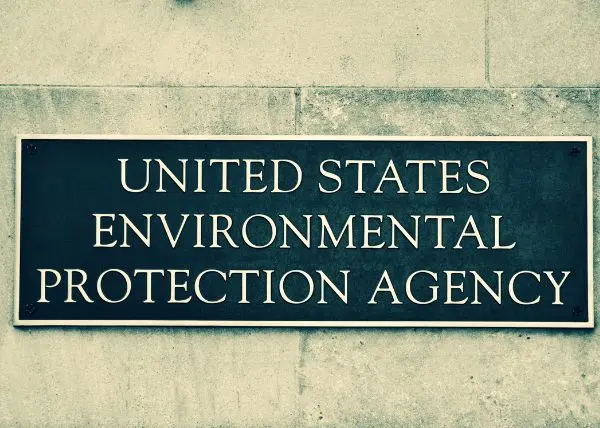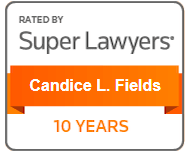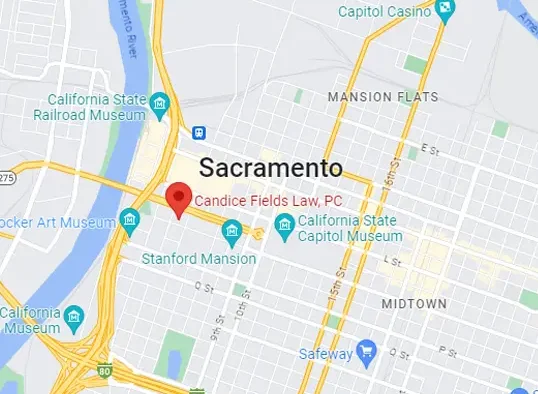Clean Air Act Violation Defense Lawyer
At Candice Fields Law, we recognize the critical challenges businesses and individuals face when navigating the regulatory landscape imposed by the Clean Air Act (CAA). Compliance with this complex federal law is crucial, as violations can lead to severe penalties, including hefty fines and potential criminal charges. Our firm is committed to providing robust legal defense for those accused of Clean Air Act violations, ensuring that our clients receive experienced counsel and effective representation.
What is the Clean Air Act?

The Clean Air Act (CAA) is a comprehensive federal law regulating air emissions from stationary and mobile sources in the United States. Enacted in 1970 and amended in 1977 and 1990, the CAA aims to ensure that all Americans have safe air. It sets standards for air quality to protect public health and the environment from the effects of air pollution.
Key Provisions of the Clean Air Act:
- National Ambient Air Quality Standards (NAAQS): The Environmental Protection Agency (EPA) must set National Ambient Air Quality Standards for pollutants harmful to public health and the environment. The EPA has established carbon monoxide, lead, nitrogen dioxide, particulate matter, ozone, and sulfur dioxide standards.
- State Implementation Plans (SIPs): Each state must develop a SIP that outlines how it will control air pollution under the NAAQS. The EPA must approve the SIP and are enforceable by law.
- New Source Performance Standards (NSPS): The CAA establishes standards for the emission of air pollutants from new or modified stationary sources (like power plants and factories) to ensure they use the latest technology to limit emissions.
- National Emission Standards for Hazardous Air Pollutants (NESHAPs): The EPA sets standards for hazardous air pollutants (HAPs) that are known to cause cancer or other serious health effects, such as mercury, asbestos, and benzene.
- Motor Vehicle Emission Standards: The Act includes provisions for reducing pollutants from motor vehicles. It allows the EPA to set standards for new motor vehicle engines and fuels, leading to cleaner gasoline and diesel development.
- Acid Rain Program: The Clean Air Act Amendments of 1990 established the Acid Rain Program, which aims to reduce acid deposition through emissions trading programs for sulfur dioxide (SO2) and nitrogen oxides (NOx), the precursors of acid rain.
- Ozone Layer Protection: The Act includes provisions to phase out the production and use of substances that deplete the ozone layer, in line with the Montreal Protocol.
What Constitutes a Violation of the Clean Air Act?
Violating the Clean Air Act (CAA) can occur in various ways, reflecting the comprehensive scope of the legislation designed to reduce air pollution nationwide. Here are some of the most common ways that entities—ranging from industrial facilities to vehicle manufacturers—can violate the provisions of the CAA:
1. Exceeding Emission Limits
One of the most direct violations of the CAA occurs when a facility emits more pollutants than allowed under the EPA's standards or the specific limits set in their permit. This includes exceeding emissions of criteria pollutants (like sulfur dioxide, nitrogen oxides, and particulate matter) or hazardous air pollutants which pose significant health risks.
2. Failure to Obtain or Violate Permit Conditions
Facilities that release significant air pollutants must obtain operating permits stipulating various emission and operational controls. Operating without such a permit or failing to comply with any of the conditions specified in the permit constitutes a violation. This includes not adhering to monitoring, record-keeping, or reporting requirements.
3. Non-Compliance with National Ambient Air Quality Standards (NAAQS)
If state and local governments do not meet the air quality standards set by the EPA, they can be found in violation of the CAA. This usually triggers a requirement for these jurisdictions to revise their State Implementation Plans (SIPs) to address non-compliance.
4. Violations Related to New Source Review (NSR)
The New Source Review program requires that new or modified industrial facilities in areas that do not meet NAAQS obtain permits before construction begins. These permits must demonstrate that the new facility will not contribute to further air quality degradation and will employ the best control technology. Violating these requirements can lead to significant penalties.
5. Failure to Meet Standards for Hazardous Air Pollutants
The National Emission Standards for Hazardous Air Pollutants (NESHAPs) are stringent regulations aimed at controlling air toxics that are known to cause cancer or other serious health impacts. Facilities that release any of these toxic pollutants above the threshold levels violate the CAA.
6. Vehicle Emission Violations
Manufacturers of motor vehicles must comply with emission standards for pollutants such as carbon monoxide, nitrogen oxides, and hydrocarbons. Producing or importing vehicles that do not meet these standards or tampering with vehicle emissions controls is a violation.
7. Violations of Acid Rain Program Provisions
This program, aimed at reducing sulfur dioxide (SO2) and nitrogen oxides (NOx), requires utilities to hold sufficient allowances to cover their emissions. Emitting more than their allowances permit can result in violations.
8. Improper Record-Keeping or Reporting
Failing to report emissions data accurately or not maintaining required records can also be seen as a violation of the CAA. Accurate documentation is crucial for regulatory oversight and enforcement.
How a Clean Air Act Violation Defense Lawyer Can Help
At Candice Fields Law, we understand that facing allegations under the Clean Air Act (CAA) can be daunting and potentially devastating for businesses and individuals alike. Our firm has experience in environmental law and offers legal representation to those accused of CAA violations. Here’s how our skilled defense lawyers can assist you in navigating these complex legal challenges:
Thorough Assessment and Strategic Defense
When you work with Candice Fields Law, our first step is to assess the charges against you thoroughly. We examine the specifics of your case, including the nature of the alleged violations and the evidence presented. Our team crafts a tailored defense strategy that addresses each aspect of the government’s case, aiming to reduce or dismiss the charges where possible.
Aggressive Negotiation with Regulatory Agencies
Our attorneys are experienced in negotiating with regulatory bodies, including the Environmental Protection Agency (EPA) and state agencies. We work diligently to negotiate favorable outcomes for our clients, potentially reducing fines and penalties and negotiating compliance schedules that are realistic and manageable. We aim to minimize CAA violations' financial and operational impact on your business.
Representation in Administrative and Judicial Proceedings
Candice Fields Law is prepared to represent you effectively whether your case is handled administratively or requires litigation. We have extensive experience in administrative hearings and court proceedings, providing robust defense services that protect your interests throughout the process.
Compliance Counseling and Preventative Measures
Beyond defending against current charges, our firm also offers compliance counseling to help prevent future violations. We can assist with permit applications, renewals, and modifications to ensure your operations remain within regulatory limits. Our EPA violation defense lawyers provides ongoing guidance on compliance with evolving air quality regulations, helping you avoid the risk of non-compliance.
Mitigating Reputational Damage
Allegations of environmental violations can damage your reputation. Candice Fields Law proactively manages your case's public relations aspects, helping maintain your business’s good standing in the community and industry. We understand the importance of public perception and strive to protect your image as we handle your legal defense.
Penalties for Violating the Clean Air Act
Violating the Clean Air Act (CAA) can result in substantial penalties divided into criminal and civil categories, based on the nature of the violation and its intent. Both penalties are designed to ensure compliance and deter future violations by imposing significant consequences. Here’s an overview of the penalties associated with violating the Clean Air Act:
Criminal Penalties
- Knowingly Violating the CAA: If an individual or entity knowingly violates any standard or requirement of the CAA, they may face criminal charges. This can include knowingly emitting pollutants beyond the levels permitted by their emissions permit or tampering with emission control devices. Penalties for such violations can include fines and imprisonment for up to 5 years.
- False Statements: Providing false information or failing to disclose information, which leads to CAA violations, can also attract criminal penalties. This includes falsifying monitoring data or other submissions to regulatory authorities. The penalties for making false statements can include fines and imprisonment for up to 2 years.
- Violations Involving Imminent Danger to Public Health or Welfare: If a violation is found to have placed the public or the environment in imminent danger, the responsible parties can face more severe criminal charges. Penalties for these offenses can include fines and imprisonment for up to 15 years, depending on the impact's circumstances and severity.
Civil Penalties
- Civil Fines: Entities found to violate the CAA can face civil fines of up to $100,000 per day per violation, depending on the specific provisions violated. These fines are adjusted for inflation, and they can be significantly higher for some violations, particularly those involving hazardous air pollutants.
- Administrative Penalties: The EPA can impose administrative penalties directly without going to court. These are usually for less serious violations and can reach up to $37,500 per day per violation, adjusted for inflation.
- Injunctive Relief: Courts may order companies to take specific actions to correct violations and come into compliance with the CAA. This can include installing pollution control equipment, changing operational practices, or taking steps to mitigate environmental damage caused by the violation.
- Supplemental Environmental Projects (SEPs): In some cases, violators may agree to undertake environmental projects that benefit public health or restore the environment in exchange for a reduction in civil penalties. These projects often go beyond what is legally required and can help offset some of the harm caused by the violations.
Additional Consequences
- Permit Actions: Violations can lead to revocation, denial, or modification of permits necessary to operate. Losing a permit can halt operations, leading to significant financial and operational impacts.
- Federally Enforced Compliance: Frequent or severe violators may find their facilities subject to federally enforced compliance orders or agreements, including more stringent monitoring and control requirements.
- Reputational Damage: Violations and the associated legal actions can cause significant reputational harm, affecting business relationships, investor confidence, and public perception.
The penalties for violating the Clean Air Act underscore the importance of compliance and the serious view that the government takes towards environmental protection. Businesses and individuals dealing with potential violations benefit from consulting with knowledgeable environmental law attorneys who can provide guidance, negotiate penalties, and advocate on their behalf.
What To Do If You Have Been Charged with Violating the Clean Air Act
Being charged with violating the Clean Air Act (CAA) can be a daunting experience, given the potential for significant legal, financial, and reputational repercussions. If you find yourself in this situation, it's crucial to take strategic and informed actions to protect your interests. Here are some key steps to consider if you have been charged with violating the CAA:
Understand the Charges
First, it's essential to understand the nature of the allegations against you fully. This involves knowing what provisions of the Clean Air Act you are accused of violating, the evidence presented by the regulatory body, and the potential penalties for the alleged violations. Obtaining a copy of the notice of violation or other formal documentation from the Environmental Protection Agency (EPA) or relevant state agency is critical.
Consult with an Environmental Law Attorney
As soon as you know of the charges, seek legal counsel from a criminal defense attorney with experience in the Clean Air Act. An experienced lawyer can help you navigate the complexities of environmental regulations, understand the legal process, and develop a strategy to address the charges effectively.
Preserve Relevant Documentation and Evidence
Collect and preserve all relevant documentation and evidence that could be used in your defense. This includes records of emissions monitoring, permits, correspondence with regulatory agencies, internal compliance audits, and any corrective actions taken. Well-organized and comprehensive documentation can be crucial in challenging the charges or negotiating a settlement.
Conduct an Internal Investigation
Conducting an internal investigation to understand the circumstances that led to the violation may be beneficial. This should be done under the guidance of your legal counsel to ensure that it is thorough and legally sound. An internal investigation can help identify any operational weaknesses, compliance gaps, or miscommunications contributing to the alleged violation.
Develop a Compliance Plan
Demonstrating a commitment to compliance can be an important part of your defense strategy. Work with your attorney and environmental consultants to develop or enhance your environmental compliance program. This may include improving emission controls, enhancing employee training, and implementing more rigorous monitoring and reporting systems.
Negotiate with the Regulatory Agency
In many cases, it may be possible to negotiate with the regulatory agency to resolve the charges outside of court. Your attorney can play a crucial role in these negotiations, which may involve discussing the circumstances of the violation, presenting evidence of your compliance efforts, and negotiating penalties or corrective actions.
Prepare for Litigation
If a satisfactory resolution cannot be reached through negotiations, you must be prepared for litigation. Your legal team will help you prepare your defense, representing you in court proceedings and advocating throughout the trial.
Charged with a Clean Air Act Violation? Contact Us Today
If you face charges under the Clean Air Act, don't navigate the complex legal landscape alone. Contact Candice Fields Law today for experienced legal representation. Our experienced environmental lawyers are dedicated to defending your rights and achieving the best possible outcome for your case. Let us help you confidently manage the accusations and ensure your business remains compliant and successful. Schedule your consultation now and take the first step toward a strong defense.





